RetroShare
Member
- Joined
- Jun 18, 2022
- Messages
- 10
If you dont mind, can you please check whether CN3 and CN4 connectors in the notebook's internal power supply are connected to the screen and CN6 is connected to the videocard in your notebook?
If you dont mind, can you please check whether CN3 and CN4 connectors in the notebook's internal power supply are connected to the screen and CN6 is connected to the videocard in your notebook?
Damn.Is there a cadmium battery inside the notebook?
Hello, is there a replacement for the keyboard and battery? The right side of my keyboard doesn't work and the battery is dead. Are there drivers for the notebook? Thank you so much.
All three are connected to the screen. When I took my laptop apart earlier today I didn't disconnect any of these three. I only disconnected like an earth on the video card and the video ribbon and I could then totally seperate the screen (still connected) and the power supply board from everything else.If you dont mind, can you please check whether CN3 and CN4 connectors in the notebook's internal power supply are connected to the screen and CN6 is connected to the videocard in your notebook?
That sounds like dead caps. There must be voltage drops. Time to replace them.At the weekend I noticed that when I switched on my 3500 (monochrome) the screen flickered like mad. I managed to adjust the brightness and contrast so the flicker was bearable and then after about 5 mins it was gone so didn't think anything about it. Monday, Tuesday all was fine. Yesterday the flicker was back, again for a few mins. Depending on how the brightness and contrast is set the flicker is literally as if the screen is off and on, not just a mild wave. As I say you can adjust the brightness and contrast so the flicker isn't so bad and then stops.
Anyone else had this? I'm worried it might get worse and worse. If it does I'll have to scrap it for spared.
You need to remove that asap before the junk starts eating your motherboard! I picked up a 3.6v Ni-Cd off eBay for about £3. And paid a local TV repair £10 to swop.Damn.
Solved now, a piece of loose solder was left and had jumped onto the motherboard!!!Hi, I've come home tonight, I way playing with my laptop and it froze and now won't boot, it just hangs here. I think I am going to give up because I seem to fix one thing and something else breaks. I'm tempted to strip and sell, do you want to buy my keyboard?
That’s a bad idea. You could replace it with a lithium cell and a shottky diode.You need to remove that asap before the junk starts eating your motherboard! I picked up a 3.6v Ni-Cd off eBay for about £3. And paid a local TV repair £10 to swop.
I went for a Ni-Cd, because being a Ni-Cd the motherboard must be able to recharge it. If you put a Ni-MH in, there's a good chance it will won't stop charging and then overheat as you need a cut off with Ni-MH and you don't with Ni-Cd.
Too late, already fitted, today infact, picking it up 9.30am tomorrow. What's the shottky diode for? To mitigate against the charging current? If so do you put the diode on the positive or negative side? Positive, I'm guessing?That’s a bad idea. You could replace it with a lithium cell and a shottky diode.
I bet its this one. It was about 1mm above the leaking battery.That sounds like dead caps. There must be voltage drops. Time to replace them.
You can check all caps with a cheap measurement tool from Ali express or replace all of them with good new ones.I bet its this one. It was about 1mm above the leaking battery.
You can check all caps with a cheap measurement tool from Ali express or replace all of them with good new ones.
The last job to do in restoration for me is the main battery. Its 2x5 Full Size NiCd C Cells. Full size C Cells are almost impossible to find singular. However you could use Sub C's or 4/5 Sub C's. I've found somewhere in the UK that supplies a 5 cell stick for £17. I'm looking to buy 2, however the company is asking the supplier if they will make me a 10 cell stick.
I've included pictures incase they are helpful to others.
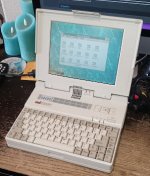
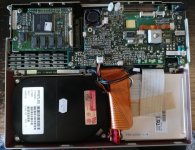
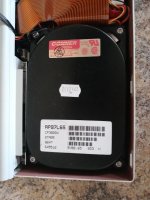
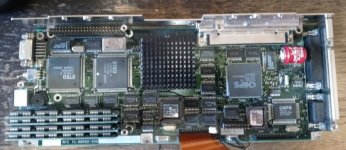
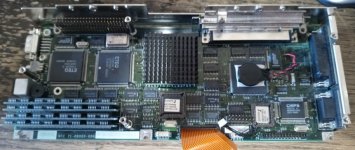
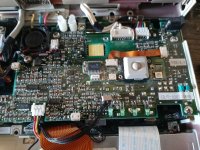
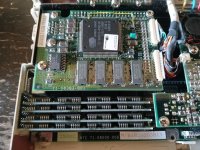
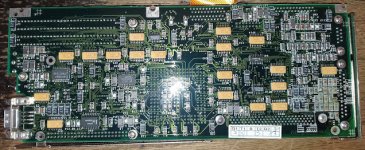
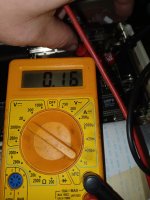
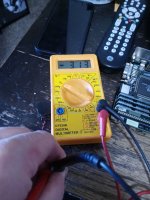
The main battery in that link looks good.
I do like the way you have replaced the battery. However, isn't there an increased risk of leakage because when the laptop is on, the motherboard is expecting to be charging a Ni-Cd?
Yep, tried it on the NanTan FMAK9200C this morning - it works! There's even a Turbo LED.Figured out another trick on the FMA3500 series today while poking around - I figured out how to get the Turbo to work on it (ie turn it off to slow it down for older games)...
(Excript from my website)
Turning Turbo On and Off - The FMA3500 series comes with an ability to slow down like a lot of desktops at the time did. How this is done, is by using the control combination CTRL+ALT+↑ to turn Turbo On, and CTRL+ALT+ ↓ to turn turbo off.
Slowing it down makes it more like a fast 286 or a 386SX from my experience. Kinda' cool. Have to wonder if the FMAK9200 is similar in this fashion, though it uses a different BIOS (AWARD vs. the Phoenixview Technologies BIOS used on the FMA3500 series).
